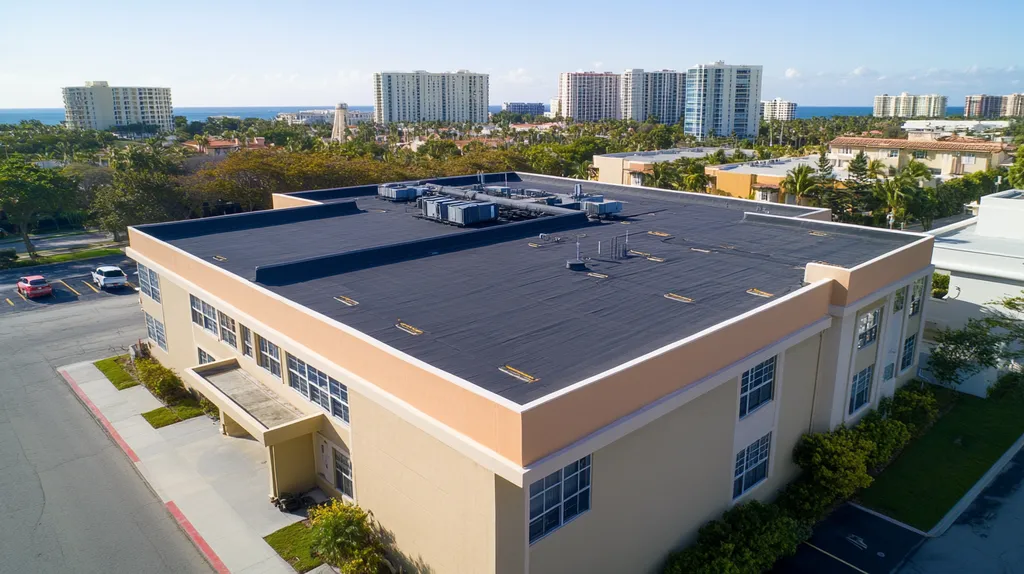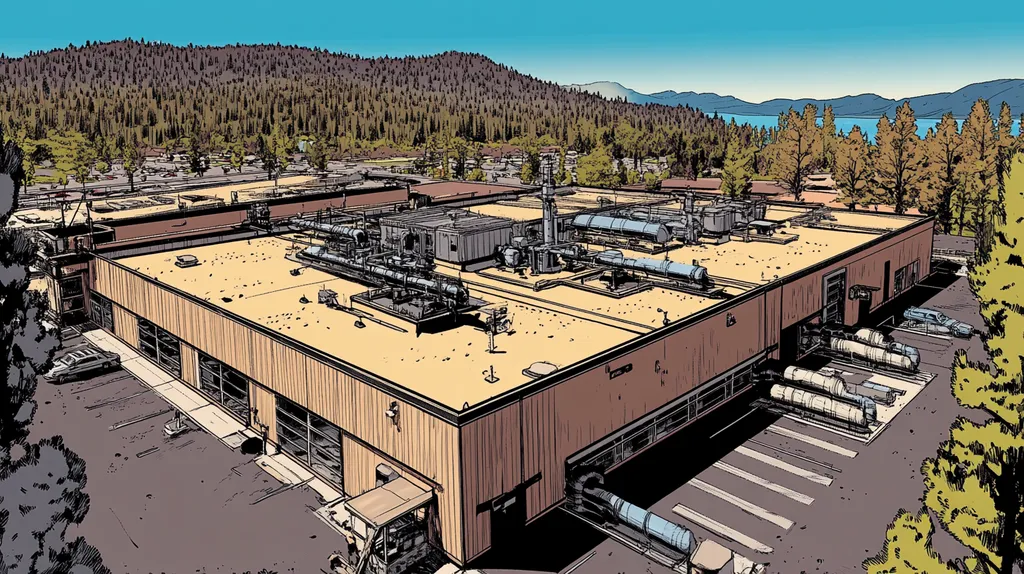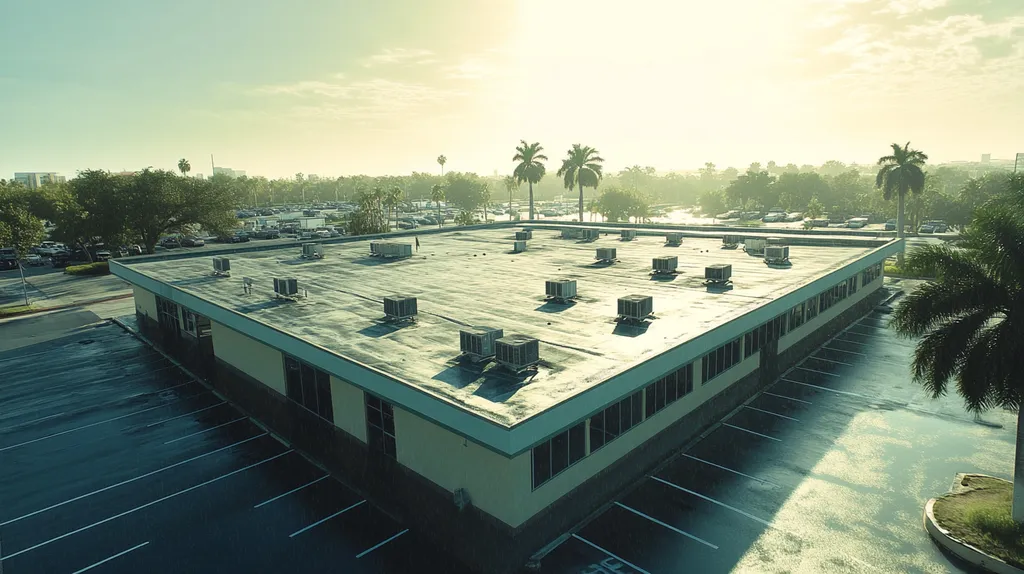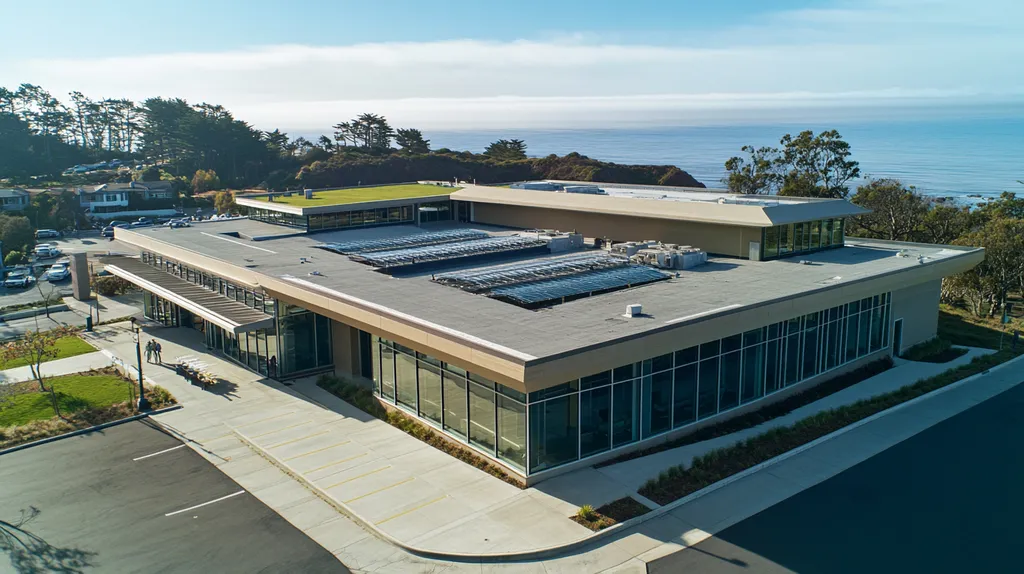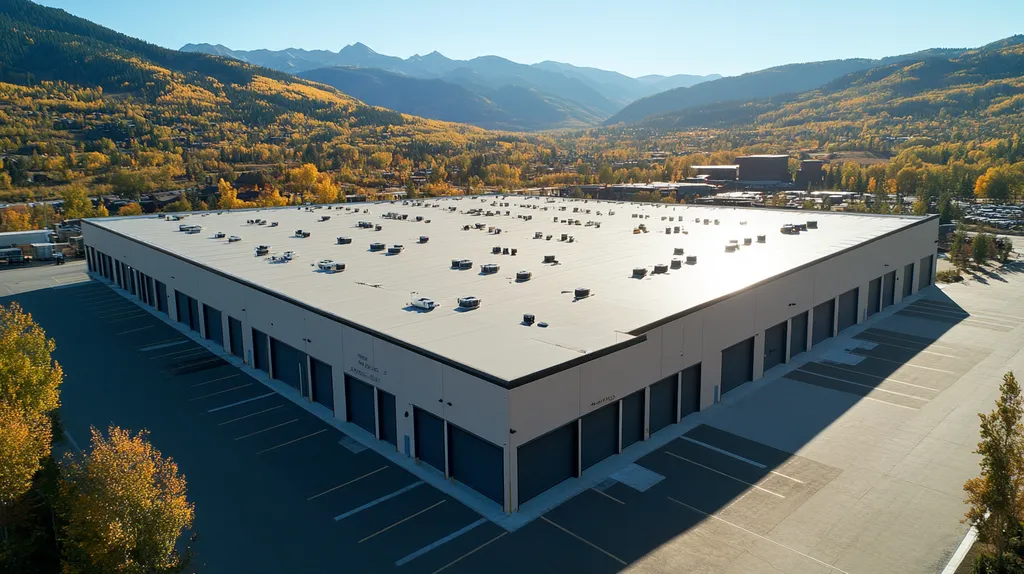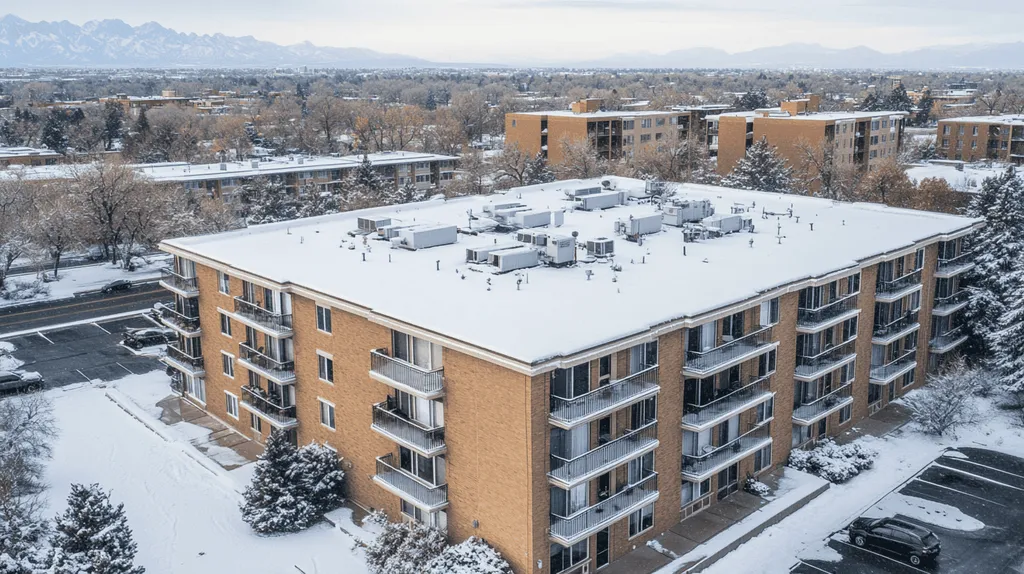Industrial roof installations represent one of the most logistically complex challenges in commercial construction, with studies showing that over 40% of projects face significant delays due to poor planning and coordination.
From material staging and equipment access to weather contingencies and operational disruptions, these multi-million dollar projects require meticulous orchestration to protect both facility operations and worker safety.
This comprehensive guide examines the critical logistics that can make or break an industrial roofing project, providing facility managers and property owners with actionable strategies to navigate common challenges while maximizing efficiency and minimizing risks.
SECTION 1: FUNDAMENTAL CONCEPTS
In industrial roofing, a solid grasp of fundamental concepts is not just beneficial—it’s essential for the success and safety of any project. Misunderstanding these principles can lead to significant delays and safety risks. For example, selecting the wrong materials can result in leaks or early roof failure, hurting both a business’s finances and its reputation.
This section delves into vital elements, including roofing materials, the impact of climate, and the basics of structural integrity. Each of these plays a crucial role in ensuring a successful roofing project.
Understanding Roofing Materials
Choosing the right roofing material is foundational for any industrial roofing initiative. Different materials, such as TPO, EPDM, or built-up roofing, possess distinct characteristics and best-use scenarios. For example, TPO roofing systems are celebrated for their energy efficiency, while EPDM is renowned for exceptional durability.
A mismatch between selected materials and local environmental conditions can lead to accelerated wear and tear, resulting in unexpected expenses. The right material choice not only optimizes performance but also affects installation costs and the roof’s lifespan. Using an unsuitable material can lead to costly repairs or premature replacements.
Moreover, local building codes and regulations must be part of the material selection process. Adhering to these guidelines ensures safety, reduces potential liabilities, and may lead to lower insurance premiums. Understanding these requirements early on is paramount for the project’s success.
Ultimately, making informed choices about roofing materials has a lasting influence on the success of industrial roof installations, enhancing performance and reducing maintenance needs over time.
Climate and Environmental Factors
Climate is a critical factor in determining the effectiveness of an industrial roofing project. Extreme temperatures, significant rainfall, or strong winds can affect how materials perform and how installations are carried out. For instance, roofs in hotter regions may benefit from reflective surfaces to combat heat retention.
It’s essential to incorporate environmental considerations at all stages of the installation process. Ignoring local weather patterns can lead to materials that underperform or fail sooner than expected, leading to increased expenses and service interruptions.
Sustainability also plays an increasingly significant role in roofing decisions. Implementing roofing systems with green technologies not only adheres to environmental standards but can also result in reduced energy costs. Energy-efficient roofing solutions contribute to a facility’s overall sustainability, a critical aspect for many organizations now.
In conclusion, paying attention to climate and environmental factors can significantly enhance the durability and efficiency of industrial roofing systems, ensuring long-term value and reliability.
Structural Integrity Basics
The structural integrity of a building is vital when selecting the appropriate roofing system. Understanding a roof’s load-bearing capacity is critical, as roofs supporting heavy machinery require reinforcements that lighter structures may not need.
Assessing existing conditions, such as the state of underlying materials and any water damage, is crucial. Addressing potential issues before installation can prevent complications that compromise safety and significantly increase costs. Failing to assess these conditions can lead to severe structural failures, endangering lives and finances.
Collaboration with structural engineers can offer invaluable insights into necessary reinforcements or modifications. Such consultation informs the choice of a roofing system that not only fits but thrives within the existing framework.
Prioritizing structural integrity in industrial roofing installations ultimately lays the foundation for a resilient and reliable facility, safeguarding investments and ensuring uninterrupted operations.
SECTION 2: SYSTEM COMPONENTS
When it comes to industrial roofing, the stakes are high. The installation process involves much more than simply laying down materials; it requires thoughtful consideration of various system components. Choosing the right components is critical—correct selections enhance performance, extend the roof’s lifespan, and reduce maintenance headaches. Studies show that poor component choices can result in significant roof failures, costing property owners thousands of dollars in unexpected repairs and lost productivity.
This section focuses on the essential roofing components: membranes and coatings, flashing details, and insulation systems. A solid understanding of these elements is key to making informed decisions that will benefit the long-term health of any facility’s roof.
Roofing Membranes and Coatings
Roofing membranes serve as the first line of defense against the elements. These durable, waterproof layers are crucial in protecting against weather damage, UV rays, and thermal fluctuations. Options such as thermoplastic membranes and modified bitumen systems each offer unique advantages, making it essential to select the right type for the facility’s specific requirements.
Coatings can further extend the lifespan of existing roofs, providing additional protection from harmful UV exposure while improving reflectivity and energy efficiency. However, an ill-suited choice for membranes or coatings may lead to premature deterioration and higher replacement costs.
Matching the membrane to environmental conditions and the operational needs of the facility is vital. For example, if a roof will be subjected to harsh chemicals, a specialized membrane with exceptional resistance properties will be necessary. Choosing incorrectly can exacerbate logistical challenges and lead to costly structural failures.
Flashing and Penetration Details
Flashing is essential for effectively directing water away from vulnerable parts of the roof. Proper attention to flashing details is critical, particularly around penetration sites like vents and skylights, where leaks are most likely to occur. Selecting the best flashing materials and installation techniques is vital for preserving the roof’s integrity.
Improper flashing installation can result in severe water infiltration, leading to expensive repairs and potential hazards. By ensuring that flashing is meticulously installed, property owners can minimize these risks, safeguarding the investment and the occupants of the facility.
Installation teams must be detail-oriented during this stage, ensuring every component integrates seamlessly. No gaps or weak points should exist, as diligent flashing installation protects against future logistical and operational disruptions.
Insulation and Drainage Systems
Insulation is a critical component for energy efficiency, helping maintain consistent temperatures within the facility. The choice of insulation material can significantly impact both heating and cooling costs, making informed selections essential based on specific building needs.
Equally important are drainage systems. Proper drainage is necessary to prevent water pooling, which can compromise the roof’s structure and shorten its lifespan. Low-slope roofs, in particular, rely heavily on effective drainage solutions to carry away rainwater and melting snow.
Both insulation and drainage systems work together to ensure the roof remains structurally sound. Poorly designed systems can complicate logistical challenges, leading to delays in maintenance and heightened safety risks. Investing in high-quality insulation and robust drainage solutions will yield long-term savings by reducing the likelihood of costly repairs and system breakdowns.
SECTION 3: IMPLEMENTATION METHODS
As industrial roofing projects become increasingly complex, the importance of effective implementation cannot be overstated. A single misstep during installation can lead to costly delays, safety hazards, and underperforming roofs. Statistics indicate that nearly 30% of industrial roofing projects overrun their schedules due to poor planning and logistical misunderstandings. This section highlights essential best practices, strategies for managing logistical challenges, and the critical nature of safety protocols to ensure successful roofing installations.
Installation Best Practices
Adhering to best practices is crucial for seamless industrial roof installations. A thorough site assessment is the first step, allowing teams to identify physical barriers and access points. This proactive approach enables better planning and reduces the risk of delays during installation.
Utilizing a centralized project management platform can enhance communication among all stakeholders, ensuring everyone remains aligned. Efficient communication fosters collaboration and prevents misunderstandings that could derail the project.
Another effective strategy is employing modular construction techniques. Pre-fabricating roofing components off-site minimizes disturbances at the installation site and improves quality control. This method can lead to substantial time savings, enabling facilities to resume their normal operations more quickly.
Regular communication during the installation phase is vital. Quick responses to unexpected issues can prevent small delays from escalating into significant setbacks, ultimately ensuring a smoother roofing process.
Managing Logistical Challenges
Logistical challenges can pose significant obstacles in roofing projects, but with proactive management, these risks can be tackled effectively. Proper scheduling is key; understanding local climate patterns aids in avoiding delays due to inclement weather. For example, planning installations during milder seasons can help sidestep potential rain and extreme temperatures.
Transportation logistics also warrant careful consideration. Timely delivery and proper storage of materials are crucial to minimizing downtime. Working with local suppliers can improve material availability, resulting in quicker fulfillment rates.
Furthermore, clear coordination with contractors and subcontractors is essential to navigate potential setbacks promptly. Defining distinct roles and responsibilities allows all teams to execute their tasks efficiently, promoting a streamlined process that keeps the project on track.
Transporting heavy equipment and materials to the roof, coordinating with ongoing operations, and managing construction waste can easily spiral into a logistical nightmare if not addressed early (source: Sunbasedata).
Safety Protocols and Training
In the realm of industrial roofing, the implementation of safety protocols is imperative. A comprehensive safety plan should be in place prior to installation. This plan must include identifying potential hazards on site, such as working at heights or near electrical lines, and establishing strategies to mitigate these risks.
Regular training sessions for workers are essential to keep safety protocols at the forefront of their minds. Hands-on training emphasizes the importance of using appropriate safety gear and understanding emergency procedures, leading to a safer working environment.
Moreover, fostering a safety-first culture promotes accountability among all employees. A workplace that prioritizes safety encourages workers to report unsafe conditions without fear, reinforcing the overall commitment to a secure installation process.
Strict adherence to safety protocols not only protects the workforce but also enhances the quality and reliability of the roofing installation. Ultimately, prioritizing safety ensures the well-being of everyone involved in the project.
SECTION 4: MAINTENANCE REQUIREMENTS
Ensuring the longevity and effectiveness of industrial roofs is not just a recommendation; it’s a necessity. Research shows that neglecting roof maintenance can lead to decreased operational efficiency and significant repair costs. Simple issues like leaks or structural deteriorations can escalate into facility shutdowns if left unaddressed. This section explores the pivotal aspects of roof maintenance, including regular inspection procedures, common defect vulnerabilities, and effective preventive strategies.
Regular Inspection Procedures
Establishing a consistent inspection schedule is vital for maintaining the integrity of an industrial roof. Ideally, inspections should take place at least twice a year, with spring and fall being the prime times. These inspections should evaluate not just the roofing material but also key components like flashing, drains, and gutters.
During these checks, property owners and facility managers should remain vigilant for visible signs of deterioration, such as cracks, blisters, or pooling water. Catching these indicators early can prevent more serious damage down the line. Keeping detailed records of findings and actions taken can prove invaluable for future maintenance planning.
Engaging certified roofing professionals for inspections is highly advisable. Their expertise can uncover issues that may escape the notice of untrained eyes. Prioritizing regular inspections allows facilities to significantly cut long-term repair costs.
Additionally, conducting inspections during seasonal transitions helps identify potential weather-related effects. This proactive mindset boosts the roof’s resilience against adverse weather conditions.
Addressing Common Defects
Many common roof defects stem from environmental exposure and material wear over time. Typical issues include cracked seams, loose flashing, and punctured membrane sections. Promptly addressing these defects is crucial for maintaining the roof’s overall integrity.
For instance, seam cracks can allow moisture to infiltrate, ultimately compromising structural materials and insulation. Implementing a repair strategy that includes both immediate fixes and long-term solutions can help mitigate these risks effectively.
Moreover, regular maintenance should not only focus on repairs but also on preventing defects from recurring. Utilizing high-quality sealants and robust materials can greatly enhance durability. Hiring qualified contractors for these repairs ensures compliance with industry standards.
Educating staff and facility managers about common roof issues can foster a collaborative approach to maintenance. Encouraging teams to report problems promptly promotes a culture of proactive roof care.
Preventive Maintenance Strategies
Adopting effective preventive maintenance strategies is essential for extending the life of industrial roofs. Regularly cleaning gutters and drainage systems to prevent water buildup is a key practice. Clogged drains can lead to significant damage; therefore, prioritizing this task is non-negotiable.
Applying reflective coatings can also minimize heat absorption, extending roof lifespan. Regularly scheduled applications of protective coatings safeguard against UV damage and thermal expansion challenges.
Creating a thorough maintenance plan allows facilities to allocate budgets for necessary repairs and upgrades. This proactive approach can spare property owners from unexpected expenses, highlighting the financial advantages of preventive maintenance.
Lastly, many roofs are frequently overlooked until issues manifest. Instituting an awareness program about maintenance encourages vigilance among personnel. Keeping everyone informed about roof care significantly contributes to enhanced facility management sustainability.
SECTION 5: PERFORMANCE METRICS
Understanding roof performance metrics has never been more critical, especially as they can greatly impact operational costs. The U.S. Department of Energy highlights that optimizing roof performance can lead to energy savings of up to 30%. This section discusses key performance metrics—including energy efficiency monitoring, water infiltration detection, and structural health assessment—that empower property owners and facility managers to make informed decisions that enhance both functionality and sustainability.
Energy Efficiency Monitoring
Energy efficiency monitoring is essential for determining how well a roof minimizes energy usage. This metric focuses on tracking thermal performance and the effectiveness of insulation, which directly impacts heating and cooling costs. By utilizing infrared thermography, property managers can pinpoint areas where heat is escaping, ensuring that energy-efficient roofing materials are being used to their fullest potential.
Reflective roof coatings, for example, can reduce surface temperatures by as much as 20 degrees, resulting in noticeable savings. Consistent monitoring allows for timely adjustments to ventilation and insulation, further enhancing energy efficiency. Incorporating smart technology can facilitate real-time tracking, providing valuable data for facilities managers.
Energy audits also play a crucial role in evaluating the performance of roofing systems. Property owners who prioritize these metrics often see substantial reductions in operational expenses, as energy-efficient roofs lead to lower utility bills.
In the bigger picture, monitoring performance metrics not only contributes to sustainability efforts but also enhances a facility’s financial health. Data-driven decisions enable smarter investments in roofing technologies, yielding significant long-term benefits.
Water Infiltration Detection
Water infiltration poses serious threats to a facility’s structural integrity and operational efficiency. Early detection is vital to prevent extensive damage and the hefty costs that often accompany repairs. Integrating leak detection systems with moisture sensors facilitates real-time monitoring, allowing for the identification of potential issues before they escalate.
For instance, a notable leak can foster mold growth, creating health risks and driving up remediation costs. By employing proactive detection strategies, minor problems can be swiftly addressed, saving on more significant repair expenses later. Continuous monitoring options, including infrared scans, can identify temperature changes indicating hidden leaks, prompting timely interventions.
Facilities equipped with advanced water infiltration detection systems are better positioned to protect their assets. Prioritizing this crucial metric fosters transparency in operations, ultimately enhancing tenant satisfaction and ensuring safety.
Through regular assessments and the integration of technology, facilities managers can act swiftly, maintaining the building in peak condition. By addressing risks related to water damage, businesses can safeguard their investments and reduce disruptions.
Structural Health Assessment
Conducting regular structural health assessments is vital for the longevity and stability of industrial roofs. These evaluations help to uncover potential issues like corrosion or material fatigue. Utilizing advanced techniques such as strain gauging and vibration analysis, facility managers can obtain an accurate picture of the roof’s condition.
A compromised roof structure can affect not only the roof itself but also the fundamental systems within the building, leading to more extensive complications. Regular assessments enable property owners to predict maintenance needs, effectively manage budgets, and schedule repairs.
Aside from immediate structural concerns, these evaluations are crucial for compliance with safety regulations. Maintaining a robust roofing structure minimizes liability risks and aligns with insurance requirements, providing peace of mind for property owners.
By staying attentive to structural health metrics, investments can be safeguarded, and costly future issues can be avoided. Integrating these assessments into routine maintenance allows facilities managers to adopt a proactive management strategy, thereby enhancing overall operational efficiency.
SECTION 5: PERFORMANCE METRICS
In today’s landscape, understanding roof performance metrics is vital for optimizing operational costs. The U.S. Department of Energy indicates that enhancing roof efficiency can yield energy savings of up to 30%. This section highlights essential metrics—energy efficiency monitoring, water infiltration detection, and structural health assessment—that empower property owners and facility managers to make informed, strategic decisions that positively impact both functionality and sustainability.
Energy Efficiency Monitoring
Energy efficiency monitoring is crucial for evaluating how well a roof minimizes energy consumption. This metric focuses on assessing thermal performance and insulation effectiveness, which can significantly influence heating and cooling costs. Utilizing infrared thermography allows property managers to identify areas where heat escapes, ensuring optimal use of energy-efficient roofing materials.
For instance, reflective roof coatings can decrease surface temperatures by up to 20 degrees, resulting in noticeable utility savings. Regular monitoring facilitates proactive adjustments to ventilation and insulation, enhancing overall energy efficiency. The integration of smart technology enables real-time tracking, arming facility managers with valuable data to drive decisions.
Additionally, conducting energy audits is essential for assessing the roofing system’s overall performance. Property owners who consistently prioritize such metrics often experience a marked reduction in operational costs, as energy-efficient roofs lead to sustainable energy prices.
Ultimately, monitoring performance metrics supports both sustainability initiatives and fiscal health. Data-driven decisions encourage smart investments in roofing technologies, yielding significant benefits over time.
Water Infiltration Detection
Water infiltration poses a severe threat to a facility’s structural integrity and operational efficiency. Early detection is critical to avoid extensive damage and costly repairs. Employing leak detection systems paired with moisture sensors provides real-time monitoring, enabling quick identification of potential issues before they escalate.
For example, unnoticed leaks can foster mold growth, posing health risks and driving up remediation expenses. By adopting a proactive detection strategy, property owners can swiftly address minor issues, preserving their budget for more significant concerns. Continuous monitoring, such as infrared scans, can also help detect temperature variations indicating hidden leaks, prompting timely corrective action.
Facilities equipped with advanced water infiltration detection systems are better positioned to protect their assets. By prioritizing this important metric, property owners can maintain transparency in operations, ultimately enhancing tenant satisfaction and safety.
Regular assessments coupled with technology integration empower facility managers to act swiftly, ensuring the building remains in excellent condition. By mitigating the risks associated with water damage, businesses can protect their investment and minimize disruptions.
Structural Health Assessment
Conducting regular structural health assessments is essential for the longevity and stability of industrial roofs. These evaluations help uncover potential issues, such as corrosion or material fatigue. Utilizing advanced techniques, like strain gauging and vibration analysis, allows facility managers to gain a comprehensive understanding of the roof’s condition.
For instance, a compromised roof structure can affect not only the roof itself but also underlying building systems, resulting in broader complications. Regular assessments enable property owners to anticipate maintenance needs, budget effectively, and schedule repairs more efficiently.
In addition to addressing immediate structural concerns, these evaluations are crucial for compliance with safety regulations. Ensuring a sound roofing structure reduces liability risks and meets insurance requirements, providing peace of mind for property owners.
By staying vigilant about structural health metrics, investments can be safeguarded, and costly future issues can be avoided. Incorporating these assessments into routine maintenance fosters a proactive management strategy that enhances overall operational efficiency.
Looking Ahead
With industrial roofing projects becoming increasingly complex and costly, the stakes for proper logistical planning have never been higher – industry data shows that poor logistics management leads to 40% higher project costs and extends timelines by up to 12 weeks.
Success demands a comprehensive understanding of material staging, equipment coordination, and weather contingencies, along with robust safety protocols and quality control measures.
Property owners and facility managers must prioritize detailed logistical planning to protect their multi-million dollar investments while ensuring minimal disruption to operations.
By implementing the strategies outlined in this guide, organizations can navigate common challenges while maximizing efficiency, reducing risks, and ensuring their industrial roofing projects deliver lasting value for years to come.
FREQUENTLY ASKED QUESTIONS
Q. What fundamental concepts should impact my industrial roof choice?
A. Understanding roofing materials, climate effects, and structural integrity is vital. These factors influence your roof’s durability, efficiency, and cost-effectiveness. Picking suitable materials based on your environment enhances performance, while structural assessments ensure safety and compliance with regulations.
Q. Which components are vital for commercial roof durability?
A. Key components include roofing membranes, flashing, and insulation systems. These elements protect against water damage, enhance energy efficiency, and ensure a longer lifespan. Choosing the right materials and installation techniques supports the structural integrity and overall reliability of your roof.
Q. How can I improve my industrial roof installation process?
A. Implementing best practices like thorough site assessments, centralized project management, and modular construction can streamline installations. Regular communication among stakeholders reduces misunderstandings, and a proactive approach to addressing potential issues ensures timely project completion and operational efficiency.
Q. What routine maintenance should my industrial roof undergo?
A. Conduct inspections at least twice a year to assess material integrity and identify vulnerabilities. Address defects promptly to prevent escalation into larger issues. Regularly scheduled preventive maintenance strategies can save significant repair costs and extend your roof’s lifespan significantly.
Q. Which performance metrics should I monitor for my commercial roof?
A. Key metrics include energy efficiency, water infiltration detection, and structural health assessments. By tracking these indicators, you can identify potential issues early, enhance energy savings, and ensure roof longevity. Monitoring performance not only optimizes operational costs but also contributes to sustainability.
Q. How can my facilities team enhance roof safety during installation?
A. A comprehensive safety plan should include identification of risks, appropriate training, and regular safety protocol reviews. Hands-on training reinforces the importance of using safety gear and emergency procedures, fostering a culture of accountability that prioritizes workplace safety during roofing projects.
Q. How do environmental factors affect my industrial roof?
A. Climate influences material performance and installation strategies. Extreme weather can affect durability, while sustainability considerations are increasingly important. Selecting energy-efficient solutions tailored to your specific environmental conditions enhances longevity and functionality, benefiting both the roof and the facility.

